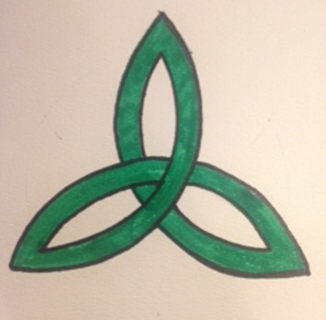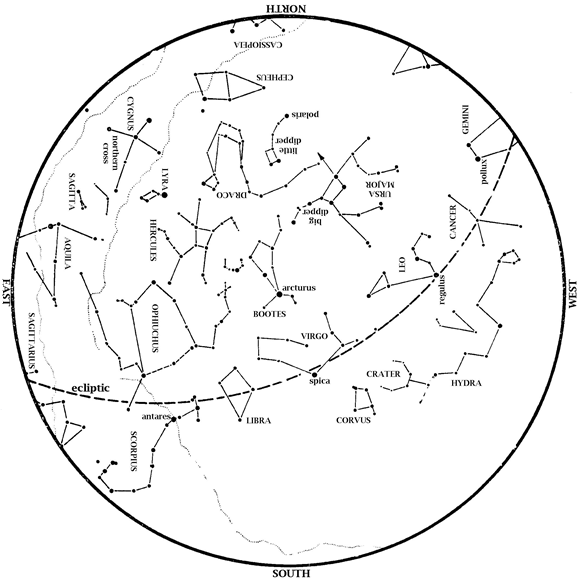At the Houston Museum of Natural Science, we know that people are as much a part of natural science as rocks and dinosaurs. That’s why we love social studies and maintain exhibits like the John P. McGovern Hall of the Americas and the Hall of Ancient Egypt. We find the development of societies fascinating!
The historical Celts, a diverse group of tribal societies in Iron Age Europe, ranged over a large swath of land reaching as far west as Ireland and the Iberian Peninsula, east to central Anatolia, and north to Scotland. The Celts used a three-cornered symbol, known as the triquetra, to adorn everyday items and important ritual objects. Similar tri-cornered symbols are seen in the artwork of many ancient civilizations. It is speculated that the symbol illustrates the uniting of the past, present, and future or birth, life, death. As Christianity spread through Europe, the triquetra was used to help new converts to understand the concept of the Trinity.
It is really simple to draw this ancient knot-work symbol. All you need is paper, a compass, an eraser, and some markers.
First, using a compass, draw a circle of at least 3 inches in diameter in the middle of your paper. Make sure to leave room around the circle, as the resulting knot will be slightly larger than the initial circle. Make sure that you do not adjust the compass after the circle is drawn.
Next, use a pencil to make a point on the circle at the twelve o’clock position. Then, place the point of the compass on this point and use it to make marks where it crosses the circle on each side.
Now, place the point of the compass on one of the marks made in the previous step. It doesn’t matter which one. Then, draw a semi-circle within the initial circle. It should start at the twelve o’clock point and end in the lower quarter of the circle. The arc does not need to be continued outside of the circle. Make another arc, identical to the first one. The two arcs should cross at the center point of the circle. If they don’t, check to make sure that the compass setting has not been changed.
Then, placing the compass point on the lower tailing end of one of the arcs, mark off another tic on the bottom of the circle.
Now place the point of the compass on the bottom mark and draw an additional arc from side to side within the circle.
You will now need to enlarge the diameter of the compass a bit. Place the compass point back onto the marks made in the upper half of the circle. From each point, draw another arc within the circle, and extending a little beyond its border. It is important to make sure the arcs are extend a bit outside of the circle so they’ll meet up when the arcs are all drawn.
Pick a point where one of the knot strips intersects another, and make it pass over the other, erasing the lines from the underside from within the “over” strip. The next pass for the knot strip, following the same strand, will be to go under the next intersection, so erase appropriately. At this point ,you may erase the initial circle and the arc marks.
Now your trisquetra is complete! Color it in! See designs like this and others this summer in the Medieval Madness Xplorations Summer Camp.













